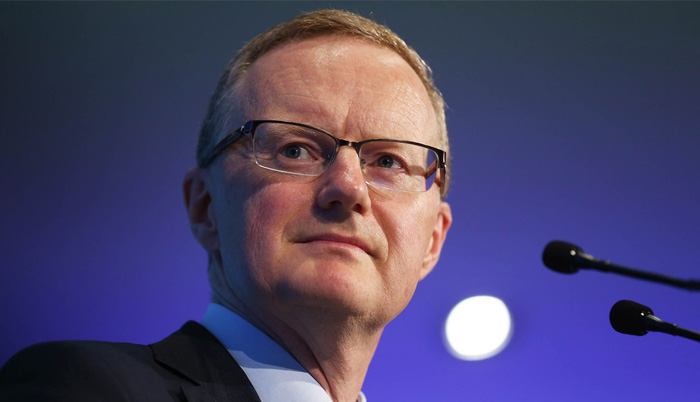![]() Home > World Business
Home > World Business
Australia Has Become A Lonely Rate-Cut Candidate

Philip LowePhotographer: Brendon Thorne/Bloomberg
![]() June 5th, 2017 | 08:40 AM |
June 5th, 2017 | 08:40 AM | ![]() 969 views
969 views
AUSTRALIA
Since the Reserve Bank of Australia’s last policy decision on May 2, market bets on an interest-rate cut by the end of this year have doubled. While that chance is still only less than 20 percent, swaps traders late Friday saw the nation as the only developed economy where cuts are possible in the coming year after data during May pointed to anemic growth in the first quarter.
For now, a mixed picture means Governor Philip Lowe will likely hold the benchmark rate at a record-low 1.5 percent on Tuesday. While reports since the RBA’s last meeting show strong employment gains and a surprise rebound in retail sales, construction has been soft and wage growth stagnant. Signs of a cooling housing market could also give the central bank leeway to ease down the track, after prices dropped in May for the first time in 18 months.
“I’ve got high conviction in our view that rates will go lower,” said Sally Auld, chief economist for Australia at JPMorgan Chase & Co. in Sydney, who expects a rate cut next quarter. “We see risks that growth and inflation will probably disappoint relative to the RBA’s forecast.”
The doves are still very much a minority. More than half of 25 economists surveyed by Bloomberg expect the cash rate to be on hold until at least the middle of next year, with six predicting a hike by then; Auld is among just five forecasting a cut. No economists expect any change on Tuesday.
There are two factors likely to keep the RBA on hold this month, Auld said. First, it’s awaiting more evidence of how lending curbs are impacting the hot east-coast property markets. Prices in the country’s five biggest cities fell 1.1 percent in May, according to a CoreLogic report last week, including a 1.3 percent drop in Sydney.
Secondly, uncertainty surrounds the temporary effects of Cyclone Debbie, which knocked out mine-to-port rail lines in the North Queensland coal fields for several weeks in April, meaning exports are likely to take a significant hit.
The past two weeks have also seen sluggish readings of GDP components. Ahead of first-quarter data due Wednesday, some economists are suggesting a contraction for the three months. That followed a 0.7 percent drop in construction and a modest 0.3 percent rise in business spending in the period. National Australia Bank Ltd. last week even flagged the possibility of a technical recession in the second quarter.
The RBA also has an eye on weak consumption. Retail sales grew just 0.1 percent in the first quarter, while some well-known clothing stores, including Herringbone and Topshop Australia, have gone into administration. On a brighter note, sales rebounded 1 percent in April, though that was partly put down to post-cyclone restocking.
Despite the better-than-expected monthly result, “the underlying trend remains soft with spending constrained by weak wages growth and elevated underemployment," Kristina Clifton, an economist at Commonwealth Bank of Australia, said in a note.
With limited scope to ease policy further, the central bank may be hoping that a ramp up in public spending on infrastructure will help drive growth in the years ahead. In its annual budget in May, the government announced A$75 billion ($55 billion) of investment in projects over the next decade after repeated calls from the RBA and economists for such spending.
But the past month’s biggest stimulus was neither the central bank’s or the government’s doing. The Aussie dollar has fallen almost 2 percent against the U.S. dollar since the RBA’s last meeting as the price of iron ore -- the nation’s biggest export -- continued its decline.
“I’m sure they’re particularly happy with the currency here at 74 cents and would prefer to leave it that way,” said Annette Beacher, head of Asia-Pacific research at TD Securities in Singapore. “I think net-net everything is sufficiently mixed for the RBA to sit back.”
Source:
courtesy of BLOOMBERG
by James Thornhill
If you have any stories or news that you would like to share with the global online community, please feel free to share it with us by contacting us directly at [email protected]